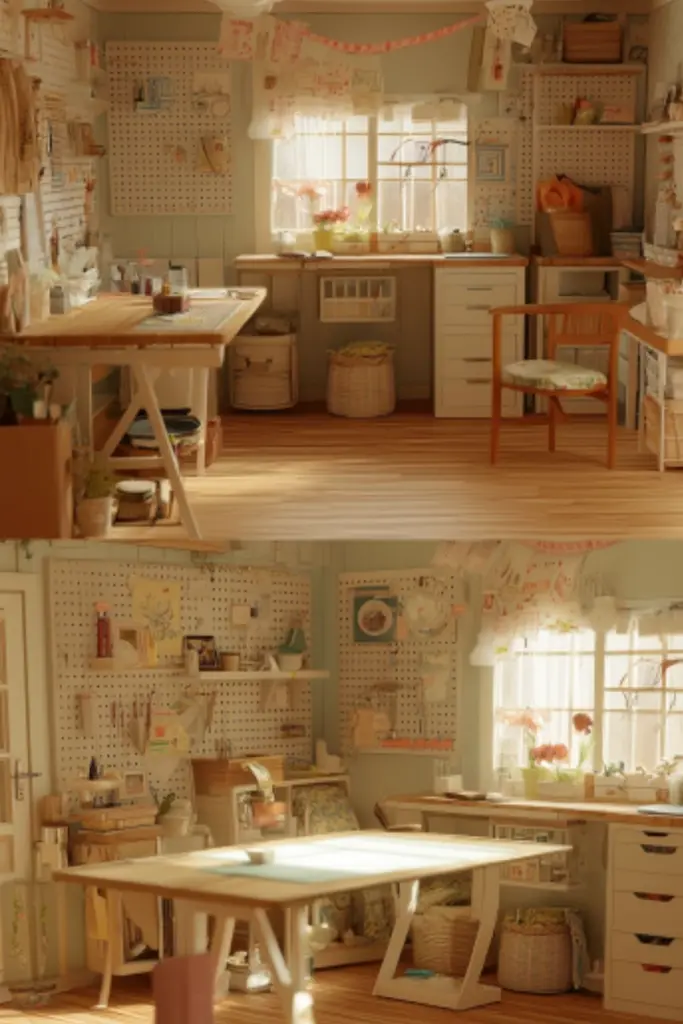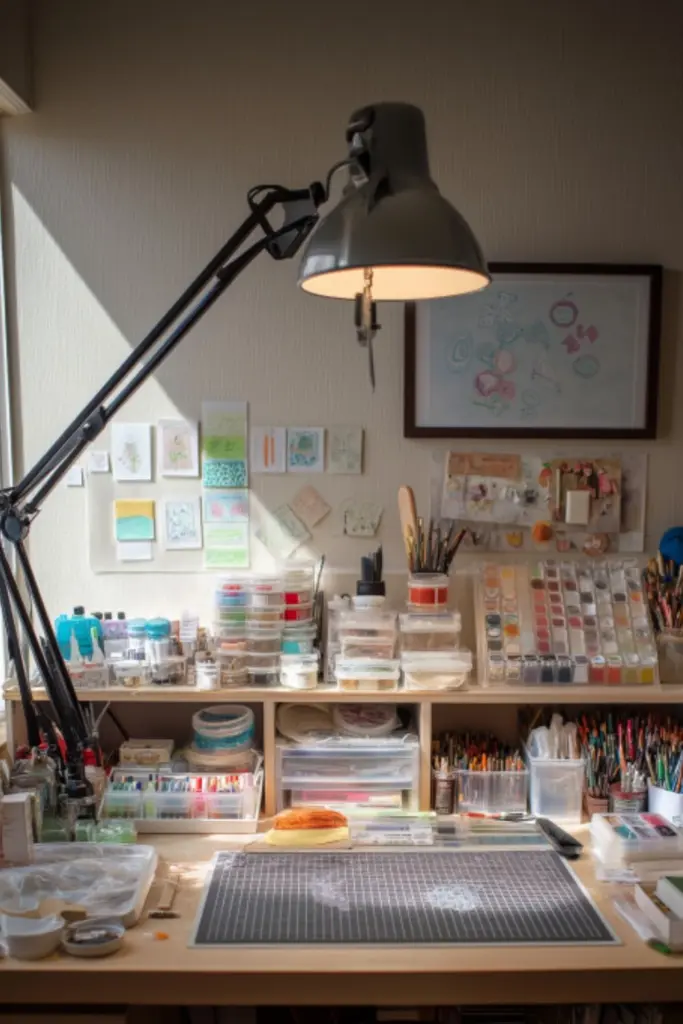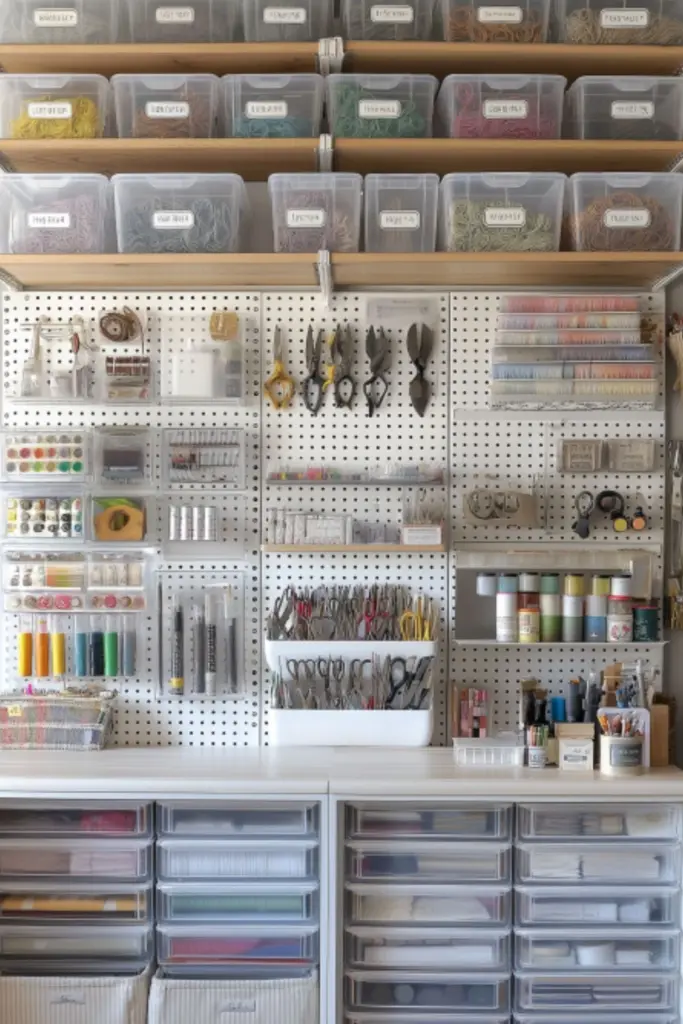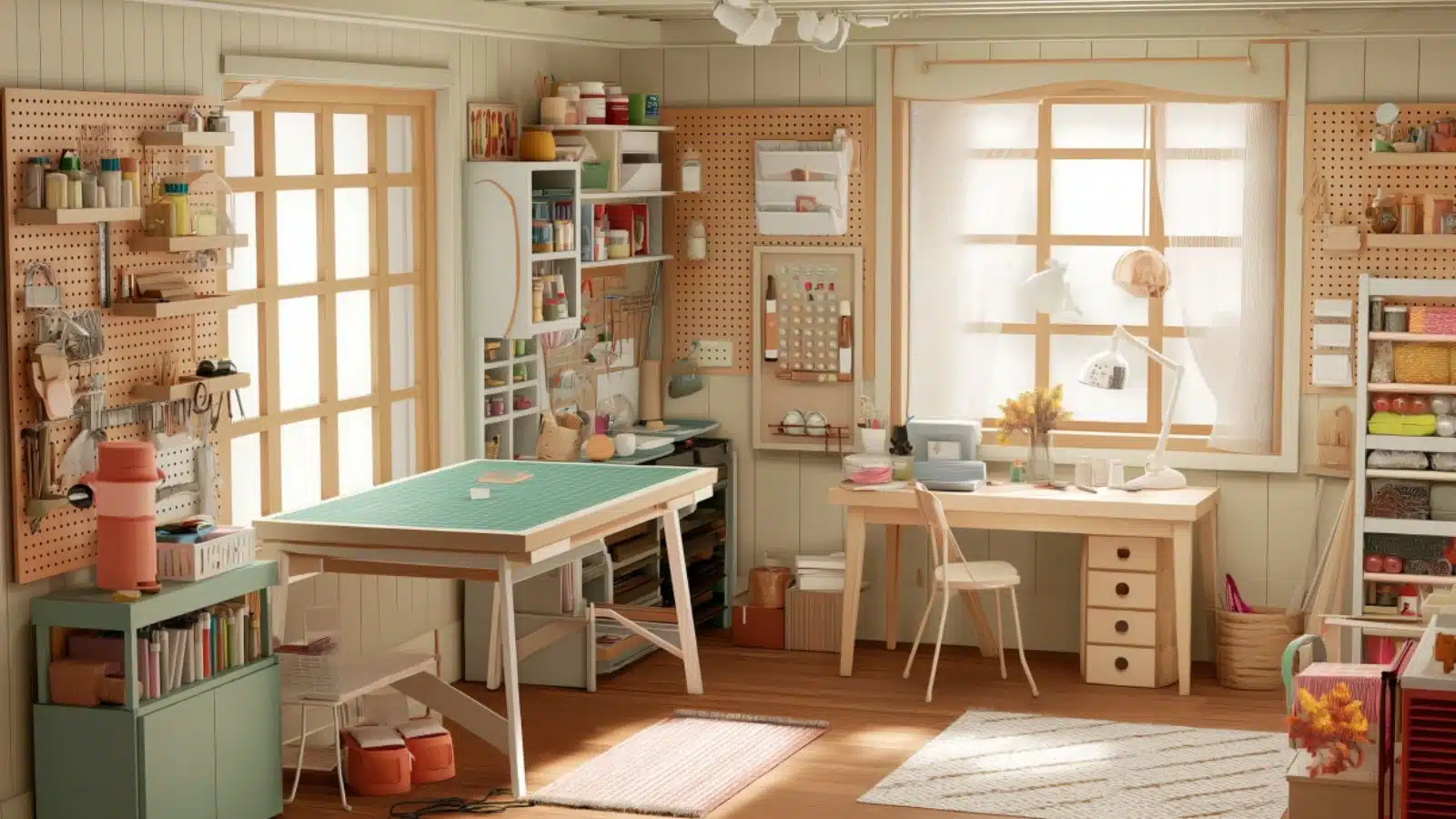Hobby Room Design Ideas for Sewing and Craft Lovers to Boost Creativity
Table of Contents
Do you lose track of time cutting fabric or piecing intricate designs? For sewing and craft lovers, the hobby room is more than a workspace—it’s a creative sanctuary. Studies show that a well-designed crafting space can boost productivity and reduce stress, making your time spent sewing or crafting feel even more rewarding.
Whether you’re piecing together quilts, stitching embroidery, or paper crafting, the layout and vibe of your hobby room can make all the difference. A space that’s bright, tidy, and inspired invites creativity, reduces frustration, and lets you focus on your passion. But designing a functional room that also sparks joy can feel daunting, especially if you’re juggling storage, utility, and style.
In this guide, you’ll explore inspiring, practical hobby room design ideas tailored for sewing and craft lovers. From choosing the right layout and lighting to incorporating storage, inspiration zones, and personalized decor, this article covers everything you need to turn your space into a creative haven. Expect actionable tips, style ideas, and organization strategies that balance aesthetics and efficiency.
Optimizing Layout for Efficient Flow

A well-thought-out layout supports seamless creativity. When designing your hobby room, think of it as three main zones: preparation, crafting, and display/storage. Ideally, these zones should flow logically, so you can move from one task to the next without interference.
Start by mapping out the room dimensions and allocating space for each zone. The preparation area (cutting table, ironing station) should be near storage for tools and materials. The crafting space, featuring a sturdy central table or desk, needs plenty of light and chair clearance. The display/storage zone houses shelves, bins, and inspirational items—position these along walls to keep the floor open.
Layout Zone Guide
| Zone | Key Elements | Efficiency Tip |
|---|---|---|
| Preparation | Cutting mat, iron, tool storage | Place near materials for fast setup |
| Crafting | Desk, chair, task lighting | Keep tools and frequently used items close |
| Display / Storage | Open shelves, pegboards, bins | Label containers, use vertical space |
This zoning avoids cluttered areas and keeps your room inviting. A smart layout supports creativity by reducing distractions and keeping everything within reach.
Balanced Lighting for Precision and Ambience

Lighting is a game-changer in a sewing or craft room. Poor lighting leads to eye strain, color errors, and sloppy stitching. The goal is to combine natural light with task and ambient lighting for a bright and inviting environment.
Start with ambient lighting—ceiling fixtures that evenly illuminate the room. Add daylight LED bulbs that mimic natural light for true color accuracy. For task lighting, install adjustable desk lamps or under-cabinet LED strips over your work surfaces. If space allows, position your workspace near a window for soft, diffused daylight, but pair it with adjustable blinds to control glare.
Lighting Solution Table
| Lighting Type | Purpose | Placement |
|---|---|---|
| Ambient (Ceiling) | General visibility | Centered or multiple fixtures |
| Task (Desk Lamps) | Precision work like sewing | On each workstation |
| Under-Cabinet LEDs | Even tabletop glow | Beneath shelves above work surface |
| Natural Daylight | Soft, true colors | Near window, controlled by blinds |
A layered lighting system helps prevent shadows and provides a comfortable workspace, no matter what craft you’re working on or what time of day it is.
Smart Storage Solutions to Eliminate Clutter

Crafting and sewing produce a lot of small supplies, and clutter quickly kills creativity. Your hobby room needs efficient storage that’s both beautiful and functional. Think modular, labeled, and easy to access.
For small items like buttons, needles, and embellishments, use clear plastic bins with labels so you can find what you need fast. Consider wall-mounted pegboards and rails for hanging scissors, rulers, and tools. Deep drawers or shelves work well for fabrics—folded by color or type. If space allows, mobile carts can serve as flexible stations for supplies you need at arm’s reach.
Organization Method Table
| Storage Type | Ideal Use | Organizational Benefit |
|---|---|---|
| Clear plastic bins | Buttons, threads, notions | Easy to locate, stackable |
| Fabric bins or baskets | Bulk fabrics, scraps | Keeps horizontal surfaces clear |
| Pegboards and rails | Scissors, rulers, cables | Visual organization, easy retrieval |
| Drawer dividers | Pens, needles, small tools | Prevents jumbled drawers |
Decluttering your hobby space supports creative flow and keeps supplies in good shape. A well-organized room makes it easier to focus on what matters—your art.
Personalized Decor to Inspire Creativity
Your hobby room should feel like a reflection of your unique creativity. Personalized decor fosters inspiration and comfort. Incorporate style elements that speak to your tastes and make the room inviting.
Create an inspiration board—filled with sketches, swatches, quotes, or project photos—near your work table. Add small plants or succulents to bring life and freshness. Use artwork or decals that speak to your craft—perhaps a framed vintage sewing pattern, watercolor painting, or calligraphy. Fabric-covered chairs, colorful rugs, and cozy cushions help soften the space.
Inspiration Zone Table
| Decor Element | Placement | Purpose |
|---|---|---|
| Inspiration board | Above crafting desk | Visual encouragement, mood-lifter |
| Greenery | Windowsill or shelves | Adds freshness, relieves stress |
| Creative prints | On walls or above storage | Reflects you and sparks ideas |
| Soft furnishings | Chair cushions, rug, curtains | Comfort and personal style |
Decor that reflects your personality makes the space feel truly yours. It encourages you to spend time there and sparks your imagination when you’re ready to create.
Ergonomic Seating and Work Surfaces for Long Sessions
Creating beautiful projects often means long hours at your hobby table. Ergonomics—proper seating and surface height—can make all the difference in comfort and longevity. A small but carefully designed workspace can be both compact and supportive.
Start with a chair that offers adjustable height and lumbar support. Sit and test how your elbows rest at the work surface—ideally they’re at right angles. If your desk edge isn’t padded, add cushions or wrist pads to reduce strain. Height-adjustable tables or surfaces are ideal—particularly for switching between sitting and standing tasks.
Ergonomic Setup Table
| Element | Desired Feature | Comfort Benefit |
|---|---|---|
| Adjustable chair | Height and back support | Reduces back and neck strain |
| Proper desk height | Elbows at 90° | Supports posture and reduces fatigue |
| Footrest cushions | Relieves pressure on lower back | Improves circulation and posture |
| Soft edge support | Cushioned edges or wrist pads | Prevents wrist strain during detailed work |
Ergonomic design helps you stay comfortable and creative, even during marathon sewing or crafting sessions.
Maximizing Small Hobby Room Space
Decorating a small hobby room poses unique challenges, but smart solutions can turn limited space into a functional and stylish creative studio. In small rooms, vertical space, multifunctional furniture, and adaptable layouts are key to preserving both usage and aesthetic appeal.
Vertical Storage Advantages
Install floor-to-ceiling shelves or vertical cubbies to keep supplies organized without occupying precious floor space. Use overhead rails or hanging containers for tools and supplies you need often, freeing up counter area. Pegboards on vertical surfaces can hold frequently-used items like scissors, rulers, and tapes.
Multifunctional Furniture Tips
Choose a folding or extendable desk that can shrink when not in use and expand when needed. Opt for a wheeled cart that serves as outlet-adjacent supply storage or portable crafting station. A bench with hidden storage can double as seating and a material bin.
Adaptive Layout Strategies
Arrange furniture parallel to walls to open a central walkway. Use corners for tall storage, clearing center space for easy movement. Repurpose unused closet space—add shelves, rolling carts, or desk surfaces to create a micro-hobby nook in a hallway or bedroom.
Small Space Solutions Table
| Strategy | Method | Benefit |
|---|---|---|
| Vertical shelving | Floor-to-ceiling open shelves | Maximizes storage without footprint |
| Pegboards & rails | Wall-mounted tool hangers | Keeps tools visible and within reach |
| Folding or extendable table | Desk that retracts when not in use | Frees up floor space |
| Multi-use furniture | Bench with storage, rolling carts | Adds utility without added bulk |
| Hidden niche setup | Desk built into closet or under counter | Creates workspace without dedicated room |
These techniques optimize spatial limits and create room for inspiration—without sacrificing comfort or creativity.
Stylish Organization for Sewing Tools and Fabric Stash
Sewing projects demand a wide array of tools—from spools of thread to pattern pieces—plus generous fabric storage. Stylish organization can help everything stay accessible and intact.
Thread and Notion Storage
Use clear acrylic boxes with dividers for thread spools; store similar colors together. Small screw-top jars or divided trays work for buttons, snaps, pins, and zippers. Consider a magnetic strip for scissors or metal tools.
Fabric Organization
Fold fabrics uniformly and store them standing up in bins or cubbies—this allows you to see every piece at a glance. Use clear-front bins if the room is dim or deep. Small scrap bins, labeled by color or project, are excellent for keeping scraps sorted.
Patterns and Paperwork
Bind patterns in labeled folders or clear sleeves, stored in accordion folders or magazine holders upright. Keep rulers flat in a shallow roll-out drawer or wall-mounted rack.
Sewing Supplies Table
| Supply Type | Ideal Storage Solution | Organizational Benefit |
|---|---|---|
| Spools of thread | Clear dividers or pegboard rack | Displays colors, prevents tangles |
| Pins, snaps, zippers | Small glass jars or divided plastic trays | Keeps pieces sorted and visible |
| Fabric bolts | Folded in upright bins or shelves | Easy to browse, prevents wrinkles |
| Scrap pieces | Labeled scrap bins or stackable trays | Encourages reuse, reduces clutter |
| Patterns and scissors | Accordion folders, magnetic strips, or rails | Easy access, safe storage |
Stylish organization is both functional and visually inspiring—a clean room encourages creative flow and keeps your focus on sewing and crafting.
Conclusion
A thoughtfully designed hobby room brings out the best in your sewing and crafting pursuits. By optimizing layout, layering lighting, incorporating smart storage, and personalizing your space, you turn a mere room into a creative sanctuary. Comfort, function, and aesthetic harmony all come together to make sure that every moment spent there feels inspired and purposeful. Whether you’re organizing fabric like a pro or finding motivation from your decor, these hobby room design ideas are designed to fuel your passion and keep your creativity flowing.

